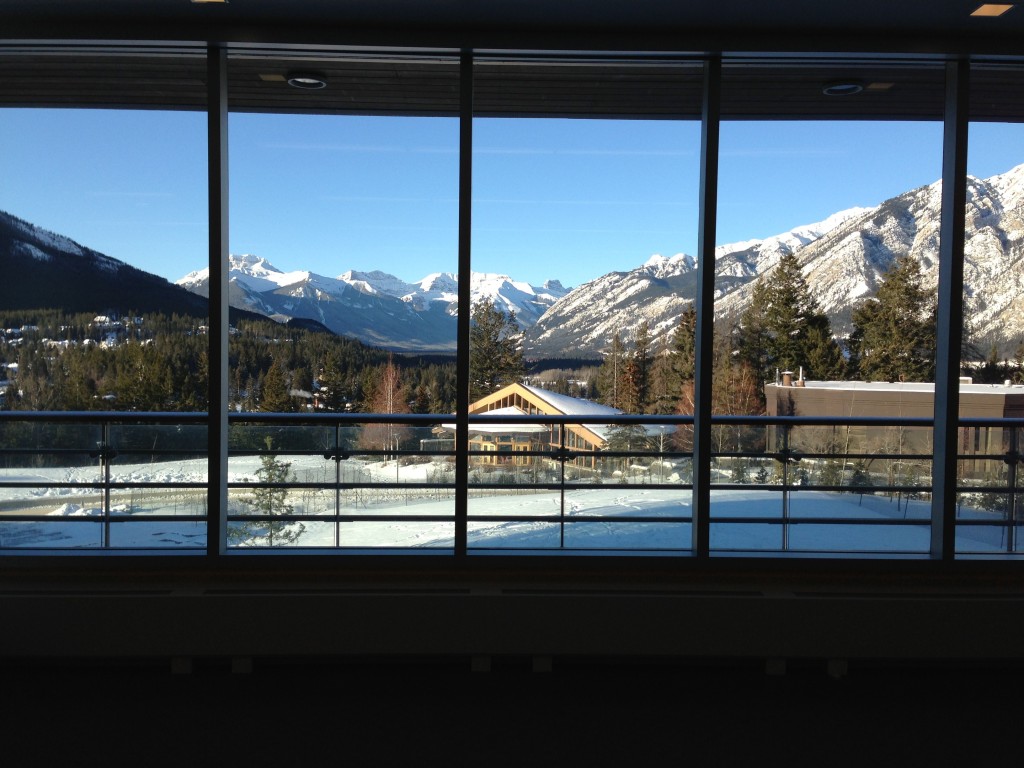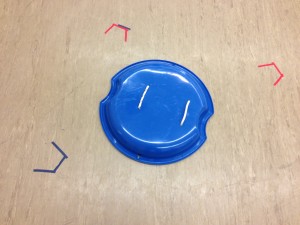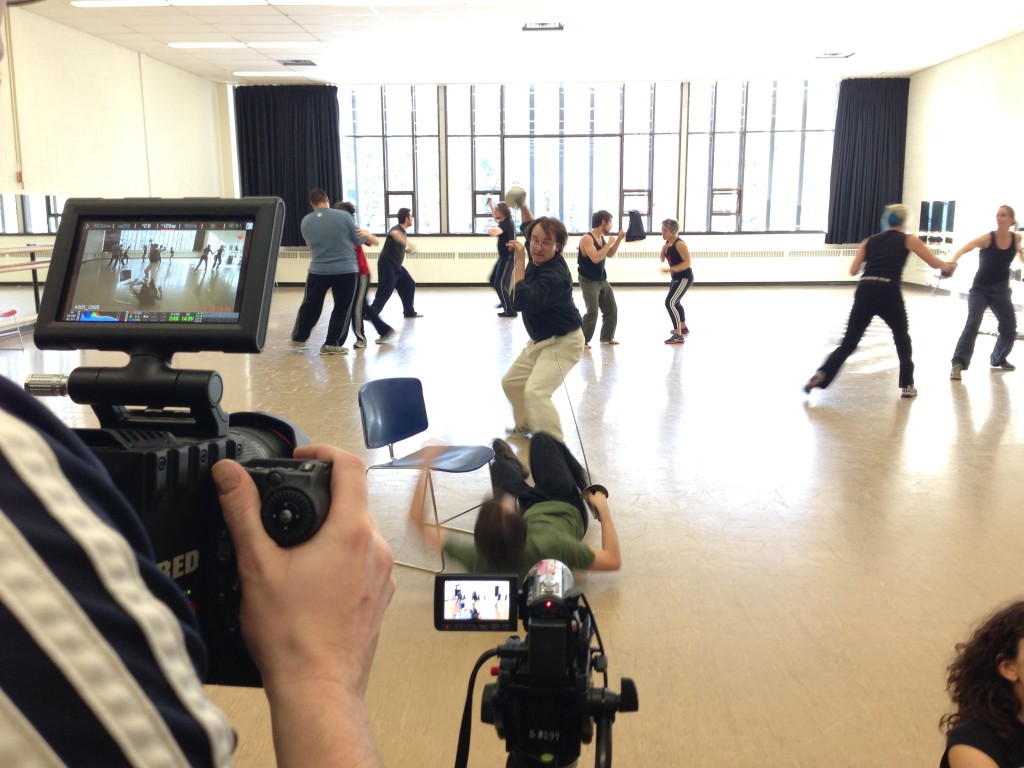The Paddy Crean Conference in Banff is a week of some of the greatest fight instructors and stunt people teaching an incredible group of enthusiasts. So every two years we get the newest innovations in stage combat and stunt work in one venue. And the food is fantastic.
I want to share some of what I learned in the classes I attended. In the same time-slot there were up to 8 other classes, so this is not all the Paddy has to offer, nor is it any guarantee that I took the workshops you would have. Sometimes, there’s regret that the session you intended to take was full, but the one you end up taking is always a learning experience.
I thought about presenting this in categories (acting, stage combat, stunts, etc), but many of the classes overlapped and the lessons I took from each were sometimes not the intention of the class overall. Instead, I offer them in chronological order:
Warm up with Scott Witt:
The first day, Scottie warmed up our brains with a group exercise in which we stood in a circle of about a dozen members. One of us would begin by pointing to another member and saying “you,” and they would in turn point to a different person and so on until we’d all been pointed to once. The last person points back to the first so that we could cycle.
Then, someone else started a different round (pointing with the other hand), and we would name foods. “Apple, cake, pudding, spaghetti, salmon…” Then we tried to do those at the same time. After adding another round of names (geography), we also passed a tap to the person next to us. Finally, we tried to avoid pointing or raising our voices so that everyone had to pay closer attention to their cues.
Nuclear Smallsword with Ian Rose:
The importance of explosive footwork in smallsword was a hallmark of this class, and I learned a deceptive new move that explodes with unexpected force. But I’m not sharing that one.
And because Ian talked about it so much, I’ll have to review the Liancour treatise.
Falling with Carrie Thiel:
This class focused first on posture, breathing and pilates exercises to give the performer core strength and connection with the floor. Then, we spent some time with back falls and rolls. The main skill that I developed was the ability to fall straight forward onto my hands which turns out to be quite painless after practicing the articulation of all parts of the fingers, wrists and joints of the whole arm.
Control & Commit with Kyle Rowling:
How to get fast and light with punches and blocks: using muscle twitch. We practiced punching the shirt for light hits, and Wing Chun blocks.
The best part that I’m going to steal for basic unarmed and intermediate martial arts is the head-roll instead of a full duck against roundhouse punches. It looks great, totally safe and much better for film.
Swashbuckling with Jonathan Howell:
A rollicking good fight with one hero against many opponents, all armed with epees. The choreography was based on At Swords Point with Maureen O’hara. We did it as a two-on-one and a four-on-one.
Takedowns with Kyle Rowling:
Superman-Spiderman-Splat, a new way to think about front falls. And Intermediate martial arts students will now learn the shoulder throw after they’ve mastered the hip throw.
Domestic Violence with Michelle Ladd:
This class was mainly acting, if you could separate it from the psychology. The stage combat was completely secondary to the journey of the abuser and the victim as they deal with each other. The cycle of violence in close relationships is not only insidious and scary, but all too common. There was a lot of material for every performance packed into this short workshop.
I have to mention that I was blown away by the acting talent of my classmates. The scenes were believable and touching.
Knapp Clinic with Rachel Brown:
In yesterday’s stage combat class, I already started teaching some of what I learned in from the RC-Annie instructors. The supine shared knap is the best I’ve seen, and very easy to master.
Shared knaps are especially useful in theatre-in-the-round, which is how we’re set up for many of our Academie Duello demonstrations. So guess what we’re going to practice in the next demo team rehearsal!
It was also fun to create as many third-party knapp sounds for another scene as we could manage. It was like doing live foley as they did in old radio shows.
Laban with Lloyd Caldwell:
Learning the language of Laban (Held, Contralateral, etc) for the core motions gave us great ideas for character walks, but also translated well to combat. Telling the story of a fight through core movements instead of distal ones was a challenge and revealed an important insight: the intention is in the body, not the arms.
Rapier a Trois with Jacques Cappelle, Jonathan Howell and Bryce Birmingham:
This was a fun single rapier fight in which three opponents fought each other. Taught by three veterans, the choreography was fun and included strong character choices and interactions.
Bullwhip with Spencer Humm:
Well, what is there to say? Bullwhip fundamentals, safety and a lot of practice in the essential cracks: the Circus crack, the Around the World crack and the Forward Crack.
In the follow-up class, we practiced the Flash, and the Queensland Flash combination. I really need a nylon whip, but it’s more for fun than career advancement.
Mocap with Michelle Ladd and Carrie Thiel:
These classes spanned three days, and included videos and still images as part of the lecture portion, and plenty of practical exercises in the types of movement necessary for motion capture for film and video games. This was probably the most informative workshop I attended, mainly because the time spent on the skills (4.5 hours) and the attention to detail of the instructors.
Smallsword with Jeanette Martinez:
I really appreciated the “true smallsword” as I’ve been researching in Angelo and other sources. Not many stage combat instructors teach opposition and the real reason why smallsword supplanted the rapier.
Rex Applegate’s WWII Combatives with Steve Huff:
This class combined the historical combatives as developed by Applegate for unarmed and knife for soldiers with the modern applications that developed from those ideas. We finished off with pistol disarms and sentry take-downs. A lot of fun, and very close to my practice of Bartitsu.
Bond vs. Bourne with Casey Kaleba & Scott Witt:
- Muscles are elastic, so let the snap back rather than flexing them back.
- Hooks should be elliptical
- A jab can also be a backlist, depending on audience angle.
- The crocodile roll is awesome.
- Violence is by definition asymmetrical.
Group Film Fight with Michelle Ladd:
I assisted Michelle for this class. We had a camera going and staged a principle fight with many background fighters. Here’s the summary for being a good performer in a background fight:
- Hit your marks! (Don’t hit other actors or furniture)
- Camera Awareness
- Realistic reactions (hit the floor)
- Visibility: don’t show your face when stunt-doubling, no flashy actions that may distract from the foreground action.
Skill, Luck or WTF? with Jared Kirby:
The idea here is that we want to stay away from audiences thinking “What just happened? Why did the worse fighter win?” This question is especially important in stories where the hero is so full of virtue or anger that he defeats a more skilled or experienced adversary. We looked at Romeo versus Tybalt in Romeo & Juliet and Mathilda versus Julia in Zastrozzi.
Boxing with Spencer Humm:
We went over a lot of drills in proper hand-wraps, gloves and focus pads. It was fun and informative, and with our small class we got a lot of personal attention.
Two Years Away
I hope to see you at the next Paddy Crean conference. You have less than two years to prepare!


